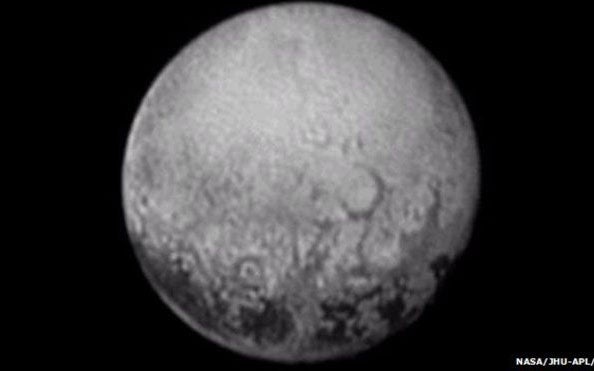Spaceship snaps best and last photos of Pluto's spots
Nasa's New Horizons is took the stunning images on its way to take really close-up shots on 14 July

Your support helps us to tell the story
From reproductive rights to climate change to Big Tech, The Independent is on the ground when the story is developing. Whether it's investigating the financials of Elon Musk's pro-Trump PAC or producing our latest documentary, 'The A Word', which shines a light on the American women fighting for reproductive rights, we know how important it is to parse out the facts from the messaging.
At such a critical moment in US history, we need reporters on the ground. Your donation allows us to keep sending journalists to speak to both sides of the story.
The Independent is trusted by Americans across the entire political spectrum. And unlike many other quality news outlets, we choose not to lock Americans out of our reporting and analysis with paywalls. We believe quality journalism should be available to everyone, paid for by those who can afford it.
Your support makes all the difference.A Nasa spaceship has snapped the last possible photos of Pluto’s mysteriously spotty side before it turns away into the darkness for decades.
New Horizons is zooming towards the dwarf planet and will pass by at just 12,500km above the planet’s surface on 14 July, taking lots of close-up photos on the way that scientists hope will help shed some light on the distant planet.
On Thursday, the spacecraft had reached three billion miles away from earth, and beamed back the best images of Pluto to date.
They were “the last, best look that anyone will have of Pluto’s far side for decades to come,” said Alan Stern, principal investigator for New Horizon at the Southwest Research Institute in Boulder, Colorado.
The photos show a string of four dark spots that have captivated the astrology community since they were first spotted. In photos taken further away, the spots looked to be all equally sized.
“It’s weird that they’re spaced so regularly,” said New Horizon scientist Curt Niebur in a statement.
The new photos allow a closer look at the four dark spots, which are all roughly the size of the US state of Missouri. It appears that the borders of the darker areas are irregular and sharply defined, according to NASA.
But scientists will have to wait a long time to get an even better look at the spots – as the hemisphere that they are on will soon be out of view.
New Horizons will eventually reach the dark side of the planet but the photos will not be as detailed – as the only light it receives is that reflected from its moon, Charon.
Scientists are looking forward to these photos as some think that snow falls on the side of Pluto away from the sun.
New Horizons will hurtle past the planet at 14k/s and its long-range camera will, the BBC reported, carpet map two 80km-wide strips of the planet.
NASA scientists back on earth will have to be patient, however, as photos this detailed will take a long time to travel back to earth. It will take about 16 months for a full picture of New Horizon’s findings.
Keen astrologers can keep up with New Horizon's journey on it's Facebook and Twitter.
Join our commenting forum
Join thought-provoking conversations, follow other Independent readers and see their replies
Comments